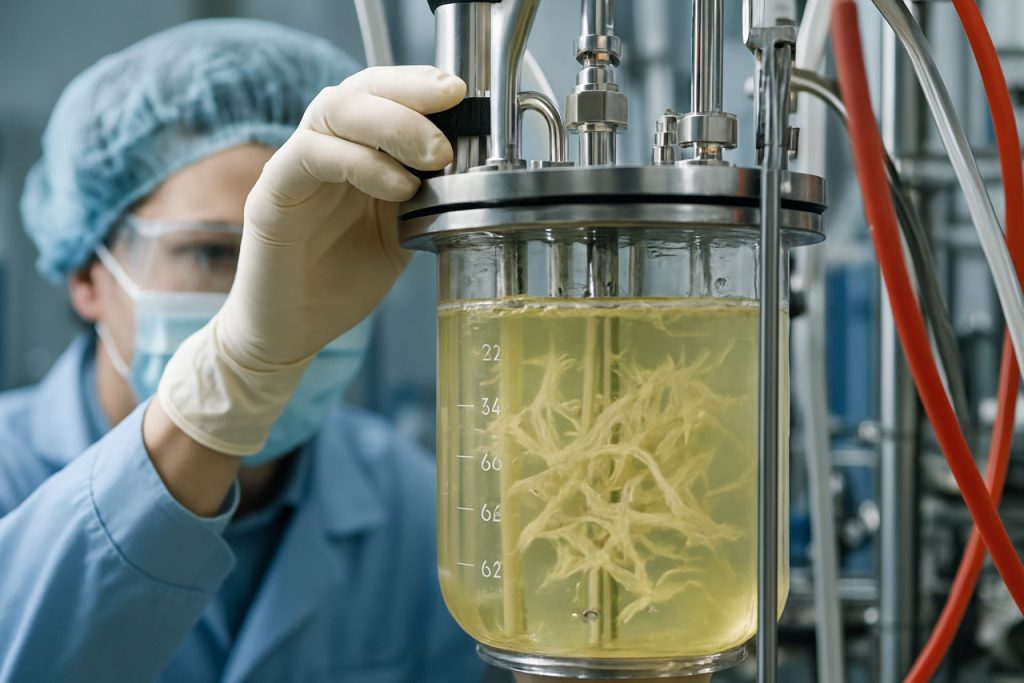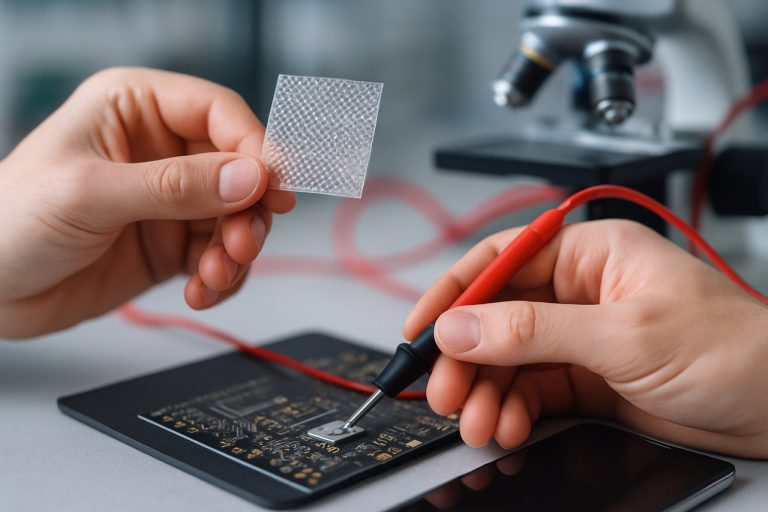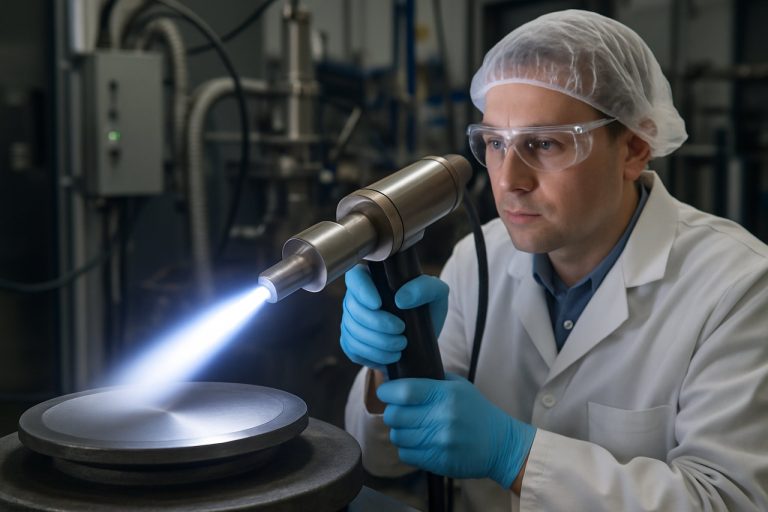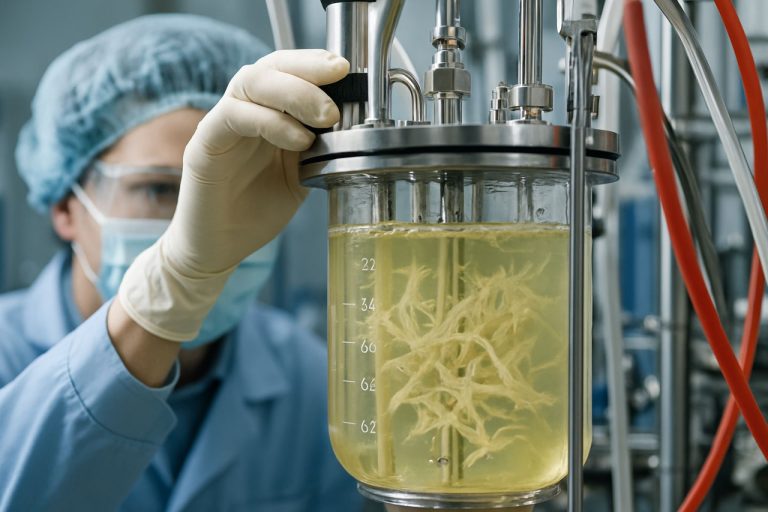
Mesenchymal Stem Cell Bioprocessing in 2025: Unleashing Next-Gen Therapies and Manufacturing Breakthroughs. Explore Market Growth, Technology Shifts, and Strategic Opportunities Shaping the Future.
- Executive Summary: Key Trends and Market Drivers in 2025
- Global Market Size, Segmentation, and 2025–2030 Growth Forecasts
- Technological Innovations in MSC Isolation, Expansion, and Differentiation
- Bioreactor Design and Automation: Scaling Up MSC Production
- Quality Control, Regulatory Compliance, and GMP Standards
- Emerging Applications: Regenerative Medicine, Immunotherapy, and Beyond
- Competitive Landscape: Leading Companies and Strategic Partnerships
- Supply Chain, Raw Materials, and Cost Optimization Strategies
- Challenges: Manufacturing Bottlenecks, Standardization, and Safety
- Future Outlook: Investment Hotspots and Disruptive Trends to 2030
- Sources & References
Executive Summary: Key Trends and Market Drivers in 2025
The mesenchymal stem cell (MSC) bioprocessing sector is entering a pivotal phase in 2025, driven by escalating clinical demand, technological innovation, and regulatory momentum. MSCs, prized for their immunomodulatory and regenerative properties, are central to a growing pipeline of cell therapies targeting conditions such as osteoarthritis, graft-versus-host disease, and autoimmune disorders. The global push for scalable, cost-effective, and reproducible manufacturing solutions is shaping the competitive landscape, with leading bioprocessing companies and technology providers accelerating the transition from laboratory-scale protocols to industrialized, Good Manufacturing Practice (GMP)-compliant production.
A key trend in 2025 is the rapid adoption of automated, closed-system bioreactor platforms, which address the challenges of manual, open culture systems—namely, contamination risk, labor intensity, and batch variability. Companies such as Sartorius and Eppendorf are expanding their portfolios of scalable bioreactors and cell expansion systems tailored for MSCs, enabling higher yields and consistent product quality. These systems are increasingly integrated with real-time monitoring and analytics, supporting process control and regulatory compliance.
Another significant driver is the evolution of cell culture media and reagents. The shift toward xeno-free, chemically defined media is accelerating, as regulatory agencies emphasize safety and reproducibility. Suppliers like Thermo Fisher Scientific and Lonza are investing in the development of specialized media formulations that support robust MSC expansion while minimizing variability and risk of adventitious agents.
Regulatory agencies in the US, Europe, and Asia are providing clearer frameworks for MSC-based therapies, which is catalyzing investment and partnerships across the sector. The harmonization of standards for cell characterization, potency assays, and release criteria is expected to streamline product development and approval timelines. Industry organizations such as the International Society for Cell & Gene Therapy are playing a pivotal role in shaping best practices and fostering collaboration.
Looking ahead, the MSC bioprocessing market is poised for robust growth, underpinned by the convergence of automation, advanced analytics, and regulatory clarity. Strategic collaborations between technology providers, contract development and manufacturing organizations (CDMOs), and clinical developers are expected to accelerate the commercialization of MSC-based therapies, with a focus on scalability, affordability, and global accessibility.
Global Market Size, Segmentation, and 2025–2030 Growth Forecasts
The global market for mesenchymal stem cell (MSC) bioprocessing is poised for robust growth between 2025 and 2030, driven by increasing clinical applications, technological advancements, and expanding manufacturing capacities. As of 2025, the MSC bioprocessing sector is characterized by a diverse segmentation that includes cell sources (bone marrow, adipose tissue, umbilical cord, and others), bioprocessing technologies (bioreactors, cell separation systems, cryopreservation), and end-users (biopharmaceutical companies, academic research institutes, and contract development and manufacturing organizations, or CDMOs).
Key industry players are investing heavily in scaling up MSC production to meet the rising demand for cell-based therapies. For example, Lonza Group is a leading CDMO with dedicated MSC manufacturing facilities, offering end-to-end solutions from process development to large-scale GMP production. Similarly, Sartorius AG provides advanced bioprocessing equipment, including scalable bioreactor platforms and cell culture media tailored for MSC expansion, supporting both research and commercial manufacturing.
The market is also witnessing increased adoption of automated and closed-system bioprocessing technologies, which enhance reproducibility, reduce contamination risks, and facilitate regulatory compliance. Companies such as Thermo Fisher Scientific and Eppendorf SE are at the forefront, supplying integrated solutions for MSC isolation, expansion, and downstream processing. These innovations are expected to accelerate the transition from small-scale laboratory protocols to industrial-scale production, a critical step for the commercialization of MSC-based therapies.
Geographically, North America and Europe currently dominate the MSC bioprocessing market, owing to a high concentration of clinical trials, established regulatory frameworks, and significant investments in regenerative medicine infrastructure. However, the Asia-Pacific region is projected to experience the fastest growth through 2030, fueled by increasing government support, expanding biomanufacturing capabilities, and a growing pipeline of cell therapy products.
Looking ahead, the global MSC bioprocessing market is forecasted to achieve double-digit compound annual growth rates (CAGR) through 2030, with market expansion underpinned by the approval of new MSC-based therapeutics and the entry of additional biomanufacturing players. Strategic collaborations between technology providers, CDMOs, and clinical developers are expected to further streamline the MSC supply chain and reduce production costs, making advanced cell therapies more accessible worldwide.
Technological Innovations in MSC Isolation, Expansion, and Differentiation
The landscape of mesenchymal stem cell (MSC) bioprocessing is undergoing rapid transformation in 2025, driven by technological innovations aimed at improving the efficiency, scalability, and reproducibility of MSC isolation, expansion, and differentiation. These advances are critical as the demand for clinical-grade MSCs grows, particularly for cell therapies and regenerative medicine applications.
A key area of innovation is the automation and standardization of MSC isolation. Traditional manual methods are being replaced by closed, automated systems that minimize contamination risks and operator variability. Companies such as Lonza and Thermo Fisher Scientific have developed integrated platforms that combine tissue dissociation, cell separation, and initial expansion in a single workflow. These systems utilize advanced enzymatic and mechanical dissociation protocols, coupled with immunomagnetic or microfluidic sorting technologies, to yield high-purity MSC populations from sources like bone marrow, adipose tissue, and umbilical cord.
In the expansion phase, bioreactor technology is at the forefront. Stirred-tank and hollow-fiber bioreactors, offered by companies such as Sartorius and Eppendorf, enable the cultivation of MSCs at large scale under tightly controlled conditions. These systems support real-time monitoring of critical parameters (e.g., pH, dissolved oxygen, nutrient levels), ensuring consistent cell quality and phenotype. Microcarrier-based cultures are increasingly favored, as they provide a high surface area-to-volume ratio, supporting robust MSC proliferation while maintaining multipotency.
Downstream, innovations in differentiation protocols are enhancing the therapeutic potential of MSCs. Companies like Miltenyi Biotec are developing defined, xeno-free media and growth factor cocktails that drive efficient and reproducible differentiation into osteogenic, chondrogenic, and adipogenic lineages. These media formulations are optimized for use in automated systems, further reducing batch-to-batch variability and supporting regulatory compliance.
Looking ahead, the integration of artificial intelligence (AI) and machine learning into MSC bioprocessing is expected to accelerate. AI-driven analytics are being applied to process data from bioreactors and cell imaging systems, enabling predictive modeling of cell growth and differentiation outcomes. This data-centric approach is anticipated to further enhance process optimization and product consistency in the coming years.
Overall, the convergence of automation, bioreactor technology, defined media, and digital analytics is setting new standards for MSC bioprocessing in 2025 and beyond, supporting the transition from laboratory-scale research to industrial-scale manufacturing for advanced cell therapies.
Bioreactor Design and Automation: Scaling Up MSC Production
The bioprocessing of mesenchymal stem cells (MSCs) is undergoing rapid transformation in 2025, driven by the need for scalable, reproducible, and regulatory-compliant manufacturing platforms. Bioreactor design and automation are at the forefront of this evolution, as the industry moves from traditional planar culture systems to advanced, closed, and automated bioreactor technologies. This shift is essential to meet the growing demand for MSCs in clinical trials and emerging cell therapies.
Stirred-tank and hollow-fiber bioreactors are now widely adopted for MSC expansion, offering improved control over culture parameters such as oxygenation, pH, and nutrient supply. Companies like Eppendorf SE and Sartorius AG have developed scalable bioreactor platforms specifically tailored for adherent cell types, including MSCs. These systems support both microcarrier-based and aggregate-based cultures, enabling high-density cell expansion while maintaining cell quality and phenotype.
Automation is increasingly integrated into MSC bioprocessing workflows. Automated cell culture systems reduce manual intervention, minimize contamination risk, and ensure batch-to-batch consistency. Lonza Group Ltd. has introduced closed, automated solutions for MSC expansion and harvesting, incorporating real-time monitoring and process analytics. These platforms are designed to comply with Good Manufacturing Practice (GMP) requirements, a critical factor as more MSC-based therapies progress toward commercialization.
Single-use bioreactor technologies are also gaining traction, offering flexibility and reducing the need for cleaning validation. Thermo Fisher Scientific Inc. and Cytiva provide single-use bioreactor systems that are compatible with MSC culture, supporting rapid process development and scale-up. These systems are particularly valuable for contract development and manufacturing organizations (CDMOs) and biotech firms seeking to accelerate clinical manufacturing timelines.
Looking ahead, the next few years are expected to see further integration of digital technologies, such as artificial intelligence-driven process control and advanced sensor technologies, to enable real-time quality assurance and adaptive process optimization. Industry collaborations and standardization efforts, led by organizations such as the International Society for Cell & Gene Therapy, are anticipated to drive harmonization of bioprocessing protocols and regulatory expectations.
In summary, 2025 marks a pivotal year for MSC bioprocessing, with bioreactor design and automation setting new standards for scalability, reproducibility, and regulatory compliance. The continued evolution of these technologies will be instrumental in supporting the transition of MSC therapies from bench to bedside.
Quality Control, Regulatory Compliance, and GMP Standards
The landscape of mesenchymal stem cell (MSC) bioprocessing in 2025 is increasingly defined by rigorous quality control, evolving regulatory compliance, and the implementation of Good Manufacturing Practice (GMP) standards. As MSC-based therapies progress toward mainstream clinical use, manufacturers and developers are under heightened scrutiny to ensure product safety, consistency, and efficacy.
Quality control in MSC bioprocessing now routinely incorporates advanced analytics, including flow cytometry for immunophenotyping, karyotyping for genetic stability, and next-generation sequencing to detect potential contaminants or mutations. Automated, closed-system bioreactors are being adopted to minimize human error and contamination risk, with companies such as Lonza and Sartorius offering scalable, GMP-compliant solutions for expansion and harvesting of MSCs. These systems are designed to support real-time monitoring and in-line quality assessments, which are critical for meeting regulatory expectations.
Regulatory agencies, including the U.S. Food and Drug Administration (FDA) and the European Medicines Agency (EMA), have updated guidance documents in recent years to address the unique challenges of cell-based products. In 2025, compliance with these guidelines requires robust documentation of cell source, donor screening, traceability, and batch-to-batch consistency. The FDA’s emphasis on Chemistry, Manufacturing, and Controls (CMC) data for Investigational New Drug (IND) applications has led to increased investment in process validation and risk management strategies. Companies like Thermo Fisher Scientific and Miltenyi Biotec are supporting the sector with validated reagents, closed-system consumables, and digital solutions for data integrity and traceability.
GMP standards are now a baseline requirement for any MSC product intended for clinical or commercial use. This includes not only facility and equipment qualification but also personnel training, environmental monitoring, and rigorous release criteria for final products. The adoption of International Council for Harmonisation (ICH) Q5A and Q7 guidelines is becoming standard practice, with organizations such as European Biotechnology Network and International Society for Cell & Gene Therapy providing resources and training to help manufacturers navigate the complex regulatory environment.
Looking ahead, the next few years are expected to bring further harmonization of global standards, increased automation, and the integration of artificial intelligence for predictive quality analytics. As the field matures, collaboration between industry, regulators, and standards organizations will be essential to ensure that MSC therapies are safe, effective, and accessible to patients worldwide.
Emerging Applications: Regenerative Medicine, Immunotherapy, and Beyond
Mesenchymal stem cell (MSC) bioprocessing is rapidly advancing, driven by the expanding scope of regenerative medicine, immunotherapy, and novel therapeutic modalities. In 2025, the field is characterized by a shift from small-scale, research-grade production to robust, scalable, and regulatory-compliant manufacturing processes. This transition is essential to meet the growing demand for clinical-grade MSCs in diverse applications, including tissue engineering, autoimmune disease treatment, and cell-based immunomodulation.
Key industry players are investing heavily in automation, closed-system bioreactors, and advanced quality control to ensure consistency and scalability. Lonza, a global leader in cell therapy manufacturing, continues to expand its MSC production capabilities, focusing on automated, GMP-compliant platforms that support both allogeneic and autologous therapies. Similarly, Sartorius is developing integrated bioprocess solutions, including single-use bioreactors and digital monitoring systems, to streamline MSC expansion and differentiation while maintaining stringent quality standards.
Emerging applications in regenerative medicine are driving innovation in MSC bioprocessing. For example, Thermo Fisher Scientific offers a suite of reagents, media, and closed-system technologies tailored for MSC culture and downstream processing, supporting clinical translation in areas such as cartilage repair, cardiac regeneration, and wound healing. In immunotherapy, MSCs are being explored for their immunomodulatory properties, with companies like Fujifilm (through its subsidiary Fujifilm Cellular Dynamics) advancing scalable manufacturing platforms to supply MSCs for trials targeting graft-versus-host disease and inflammatory disorders.
The next few years are expected to see further integration of artificial intelligence and digital twins in MSC bioprocessing, enabling real-time process optimization and predictive quality assurance. Industry consortia and regulatory bodies are also collaborating to establish harmonized standards for MSC characterization, potency assays, and release criteria, which will be critical for global commercialization. Organizations such as the International Society for Cell & Gene Therapy are actively shaping best practices and regulatory frameworks to support safe and effective MSC-based therapies.
Looking ahead, the convergence of bioprocess engineering, automation, and regulatory innovation is poised to accelerate the clinical and commercial impact of MSCs. As manufacturing platforms mature and new therapeutic indications emerge, MSC bioprocessing will remain a cornerstone of the evolving cell therapy landscape through 2025 and beyond.
Competitive Landscape: Leading Companies and Strategic Partnerships
The competitive landscape of mesenchymal stem cell (MSC) bioprocessing in 2025 is characterized by a dynamic interplay of established biopharmaceutical companies, specialized cell therapy manufacturers, and technology providers. The sector is witnessing a surge in strategic partnerships, mergers, and technology licensing agreements aimed at scaling up production, improving product consistency, and accelerating clinical translation.
Among the global leaders, Lonza Group continues to set benchmarks in MSC bioprocessing, leveraging its extensive experience in cell therapy manufacturing and its proprietary Cocoon™ platform for automated, closed-system cell expansion. Lonza’s collaborations with both large pharmaceutical companies and emerging biotech firms underscore its central role in contract development and manufacturing (CDMO) for MSC-based therapies. Similarly, Sartorius AG is advancing the field with its scalable bioreactor systems and digital bioprocessing solutions, supporting both research-scale and commercial-scale MSC production.
In the United States, Thermo Fisher Scientific remains a key player, offering a comprehensive suite of reagents, media, and closed-system bioprocessing equipment tailored for MSC expansion and differentiation. The company’s ongoing investments in automation and digitalization are aimed at reducing batch-to-batch variability and ensuring regulatory compliance for cell therapy products. Cytiva (formerly part of GE Healthcare Life Sciences) is also prominent, providing integrated solutions for cell culture, process monitoring, and downstream processing, and has entered into multiple partnerships to co-develop next-generation MSC manufacturing platforms.
Strategic alliances are shaping the sector’s future. For example, collaborations between technology providers and cell therapy developers are accelerating the adoption of closed, automated systems, which are critical for meeting the stringent quality and scalability demands of late-stage clinical trials and commercial launches. Companies such as Miltenyi Biotec are notable for their expertise in cell separation and GMP-compliant manufacturing, and have formed partnerships with academic centers and industry players to streamline MSC production workflows.
Looking ahead, the competitive landscape is expected to intensify as more MSC-based therapies approach regulatory approval and commercialization. The entry of new players, particularly from Asia-Pacific regions, and the increasing role of digital bioprocessing and artificial intelligence in process optimization, are likely to further transform the sector. Companies with robust manufacturing capabilities, strong regulatory track records, and a willingness to engage in strategic partnerships are poised to lead the next phase of growth in MSC bioprocessing.
Supply Chain, Raw Materials, and Cost Optimization Strategies
The supply chain for mesenchymal stem cell (MSC) bioprocessing in 2025 is characterized by increasing complexity and a strong focus on cost optimization, quality, and scalability. As clinical and commercial demand for MSC-based therapies grows, manufacturers are prioritizing robust sourcing of raw materials, streamlined logistics, and advanced process controls to ensure consistent product quality and regulatory compliance.
Raw materials for MSC bioprocessing include basal media, growth factors, supplements (such as human platelet lysate or fetal bovine serum), and single-use bioprocessing consumables. Leading suppliers such as Thermo Fisher Scientific and Merck KGaA (operating as MilliporeSigma in the US and Canada) have expanded their portfolios to offer GMP-grade, animal-origin-free reagents and closed-system consumables, addressing both safety and regulatory requirements. These companies have also invested in regional manufacturing and distribution hubs to mitigate supply chain disruptions and reduce lead times.
The shift toward xeno-free and chemically defined media is accelerating, driven by regulatory expectations and the need for reproducibility. Lonza and Cytiva are notable for their development of scalable, serum-free media formulations and integrated bioprocessing platforms tailored for MSC expansion and differentiation. These solutions are designed to minimize batch-to-batch variability and support automation, which is increasingly critical as manufacturers move toward larger-scale, allogeneic MSC production.
Cost optimization strategies in 2025 focus on both upstream and downstream process improvements. Upstream, the adoption of high-density cell culture systems—such as microcarriers in stirred-tank bioreactors—enables higher yields per batch and reduces labor and facility costs. Companies like Eppendorf and Sartorius are advancing single-use bioreactor technologies that support closed, automated workflows, further reducing contamination risks and operational expenses.
Downstream, the implementation of scalable, closed-system cell harvesting and washing solutions is becoming standard. Suppliers are also offering modular, ready-to-use fill-finish systems to streamline final product formulation and packaging. The integration of digital supply chain management tools—such as real-time inventory tracking and predictive analytics—is being adopted by major players to optimize raw material usage and reduce waste.
Looking ahead, the MSC bioprocessing supply chain is expected to become more resilient and cost-efficient through continued investment in local manufacturing, digitalization, and the development of standardized, regulatory-compliant raw materials. Strategic partnerships between cell therapy developers and raw material suppliers are likely to intensify, ensuring secure, high-quality supply and supporting the anticipated scale-up of MSC-based therapies in the coming years.
Challenges: Manufacturing Bottlenecks, Standardization, and Safety
The field of mesenchymal stem cell (MSC) bioprocessing is advancing rapidly, yet several critical challenges persist as the sector moves through 2025 and into the coming years. Chief among these are manufacturing bottlenecks, the need for robust standardization, and ensuring product safety—each of which directly impacts the scalability and clinical translation of MSC-based therapies.
Manufacturing bottlenecks remain a significant hurdle. The transition from small-scale laboratory protocols to large-scale, Good Manufacturing Practice (GMP)-compliant production is complex. Key issues include maintaining cell quality and potency during expansion, as well as ensuring batch-to-batch consistency. Leading bioprocessing technology providers such as Sartorius and Thermo Fisher Scientific have introduced automated, closed-system bioreactors and cell processing platforms designed to address these challenges. However, the integration of these systems into existing workflows and the high capital investment required can slow adoption, particularly for smaller manufacturers.
Standardization is another pressing concern. Variability in MSC sources (e.g., bone marrow, adipose tissue, umbilical cord), isolation methods, and culture conditions can lead to significant differences in cell phenotype and therapeutic efficacy. Industry organizations such as the International Society for Cell & Gene Therapy are actively working to establish consensus guidelines for MSC characterization, release criteria, and potency assays. Despite these efforts, a universally accepted set of standards has yet to be fully implemented across the industry, complicating regulatory approval and inter-laboratory comparability.
Safety remains paramount as MSC therapies progress toward broader clinical use. Risks such as immunogenicity, tumorigenicity, and microbial contamination must be rigorously controlled. Companies like Lonza and Miltenyi Biotec are developing advanced quality control assays and closed-system processing solutions to minimize contamination and ensure product safety. Regulatory agencies, including the U.S. Food and Drug Administration (FDA) and the European Medicines Agency (EMA), are increasing scrutiny on manufacturing processes, requiring comprehensive documentation and validation of safety protocols.
Looking ahead, the sector is expected to see increased adoption of automation, digital monitoring, and artificial intelligence-driven analytics to optimize MSC manufacturing. Collaborative efforts between technology providers, regulatory bodies, and industry consortia will be crucial in overcoming current bottlenecks, achieving standardization, and ensuring the safety of MSC-based products as they move toward mainstream clinical application.
Future Outlook: Investment Hotspots and Disruptive Trends to 2030
The mesenchymal stem cell (MSC) bioprocessing sector is poised for significant transformation through 2025 and into the latter half of the decade, driven by escalating clinical demand, regulatory momentum, and technological innovation. As the global pipeline of MSC-based therapies expands, investment is increasingly concentrated in scalable manufacturing, automation, and quality control solutions that address the unique challenges of MSC expansion and differentiation.
A key investment hotspot is the development of advanced bioreactor systems tailored for MSC culture. Companies such as Eppendorf SE and Sartorius AG are actively advancing stirred-tank and hollow-fiber bioreactor platforms, which enable high-density, closed-system expansion of MSCs with improved reproducibility and reduced contamination risk. These systems are being adopted by contract development and manufacturing organizations (CDMOs) and cell therapy developers seeking to transition from manual, planar culture to automated, scalable processes.
Another disruptive trend is the integration of digital process analytics and artificial intelligence (AI) for real-time monitoring and control of MSC bioprocesses. Companies like Cytiva are investing in digital bioprocessing suites that leverage sensor data and machine learning to optimize cell yield, viability, and critical quality attributes. This digitalization is expected to accelerate process development timelines and support regulatory compliance as authorities such as the U.S. FDA and EMA increasingly emphasize data integrity and process transparency.
Supply chain robustness and raw material standardization are also attracting investment, with suppliers such as Lonza Group AG and Thermo Fisher Scientific Inc. expanding their portfolios of GMP-grade media, cytokines, and ancillary materials specifically validated for MSC manufacturing. These efforts aim to reduce batch-to-batch variability and facilitate global harmonization of MSC product quality.
Looking ahead to 2030, the sector is expected to see further disruption from allogeneic “off-the-shelf” MSC therapies, which require robust, large-scale bioprocessing infrastructure. Strategic partnerships between bioprocessing technology providers and cell therapy developers are likely to intensify, as seen in recent collaborations involving Miltenyi Biotec and other leading players. Additionally, regulatory frameworks are anticipated to evolve in tandem with technological advances, supporting accelerated approval pathways for MSC-based products.
In summary, the next five years will be characterized by rapid industrialization, digital transformation, and supply chain maturation in MSC bioprocessing, with investment flowing toward scalable, automated, and data-driven solutions that can meet the demands of a growing regenerative medicine market.
Sources & References
- Sartorius
- Eppendorf
- Thermo Fisher Scientific
- International Society for Cell & Gene Therapy
- Miltenyi Biotec
- European Biotechnology Network
- Fujifilm



